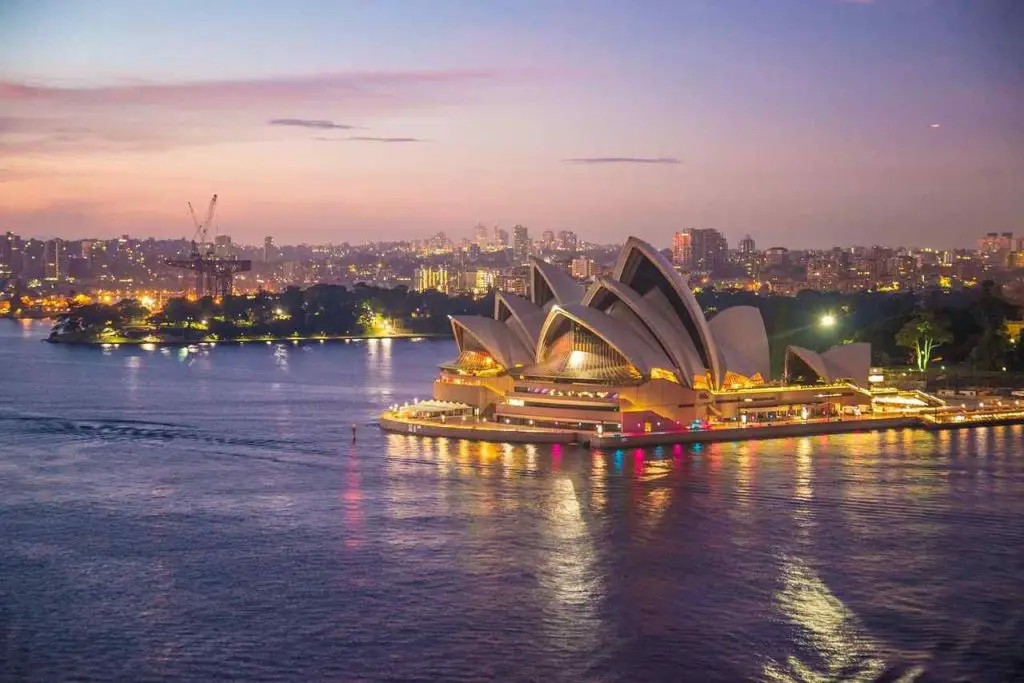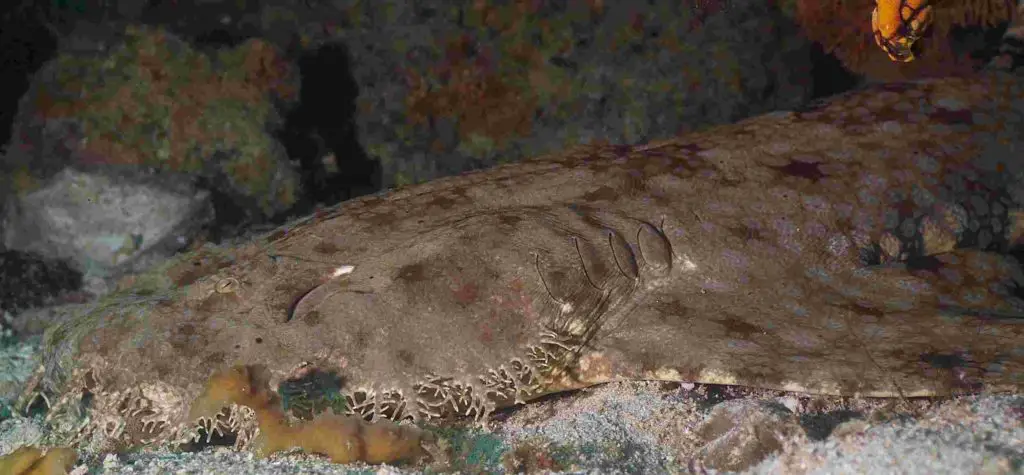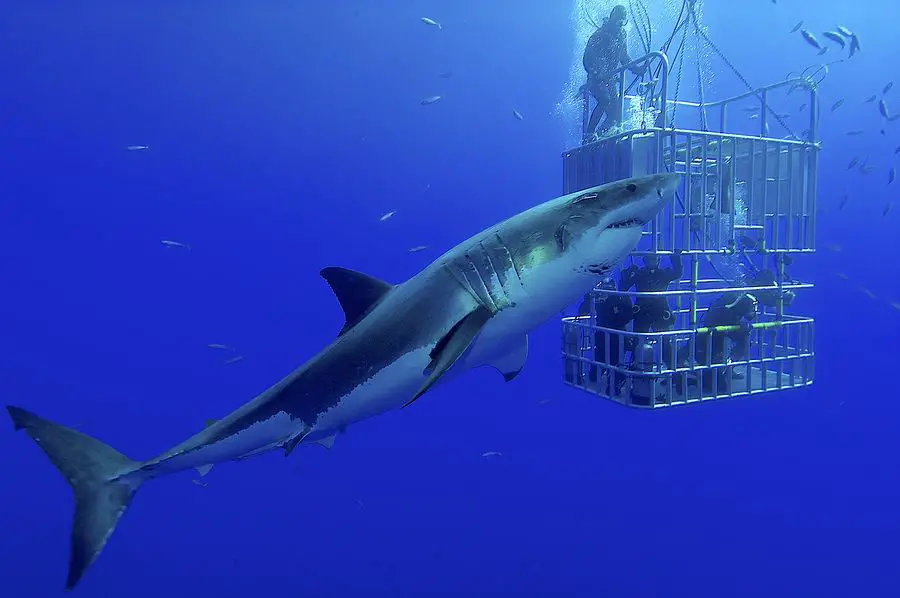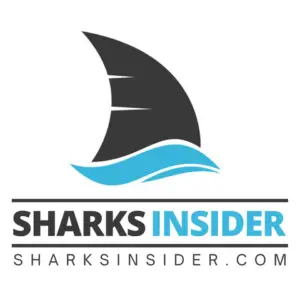Australia is one of the best travel destinations on Earth. A beautiful country with a perfect mix between nature and big cities, culture, and great food. Attracting thousands of tourists annually, some may worry about the presence (and the number of attacks) of sharks in the region. But is this something to worry about? Are there sharks in Australia?
Australia is home to at least 180 species of shark, with 70 of them endemic to the area. Also, the so-called “The Land Down Under” is the second country with more shark attacks, losing only to the United States. However, the odds of dying in a shark incident are very low, even in Australia.
Most of the attacks in Australia involve “The Big Three,” the three species that are involved in the highest number of shark attacks in the world. Even so, you have more chances of dying hit by lightning (twice) than in a shark attack, including in Australia.
In this article, I have prepared a complete species guide on Australia’s most common shark species, the best places for shark diving and watching, and detailed research about all the shark attacks ever registered in Australian waters.
To learn all about Sharks in Australia, keep reading.
Are There Sharks In Australia? (Common Species)

Australia is a fantastic country and one of the best places on Earth to see sharks. There are great places to see sharks in their natural habitat, such as the Erye Peninsula, where it’s possible to cage dive and get face-to-face with a Great White Shark. But this famous and feared sharp teeth predator is not the only species that thrive in Australian waters.
There are at least 180 species of shark in Australia. The most common species are:
- Blacktip Reef Shark
- Blind Shark
- Bronze Whaler
- Bull Shark
- Common Thresher Shark
- Great Hammerhead Shark
- Great White Shark
- Grey Nurse
- Grey Reef Shark
- Oceanic Whitetip Shark
- Port Jackson
- Pygmy Shark
- Tasseled Wobbegong
- Tiger Shark
- Whale Shark
- Zebra Shark
With more than 180 species, it’s almost unfair to list the most common, but these 16 species are more frequently seen in Australia. From gigantic sharks like the Whale Shark, the biggest on Earth, to the smallest Pygmy Shark, this country’s marine life is full of incredible species. Dangerous predators are also on the list, including “The Big Three,” Tiger Sharks, Bull Sharks, and White Sharks.
- Sharks Species In Australia: 180 (At least)
- Most Dangerous/Aggressive Species: Great White Shark / Tiger Shark / Bull Shark
- Biggest Sharks In Australia: Whale Sharks
These shark species are called “The Big Three” because of the large number of shark attacks in which they are involved. With a naturally more aggressive and scavenger behavior, these species are not intimidated by humans and will attack if they feel threatened. As their victims readily identify them for their characteristics, these ferocious animals are at the top of the food chain and shark incidents rankings.
Related Article: Are There Sharks In Ohio? (Ohio River Sharks)
Wobbegong Sharks In Australia

Another exciting species that deserves attention in Australia’s list of the most common sharks is the Tasseled Wobbegong, an endemic species. Wobbegong means “shaggy beard” and is the common name given to 12 carpet sharks belonging to the Orectolobidae family. Bottom-dwelling, they spend most of their time resting on the ocean floor.
The Tasseled Wobbegong is one of the most frequent. A professional sea bottom dweller, this exotic-looking animal can reach up to 1.2 meters (4 ft) and is not aggressive to humans. However, if stepped on, this animal may bite, so it’s potentially dangerous if provoked or feel threatened. It’s a species involved in a considerable amount of shark incidents.
In the following table, you will find a comprehensive species guide and detailed information about Australia’s sixteen most common sharks.
| Species | Scientific Name | Maximum Size | Aggressiveness |
|---|---|---|---|
| Blacktip Reef Shark | Carcharhinus melanopterus | Up to 2 m (6.5 ft) | Not Aggressive (Potentially Dangerous) |
| Blind Shark | Brachaelurus waddi | Up to 1.2 m (4 ft) | Not Aggressive (Harmless) |
| Bronze Whaler Shark | Carcharhinus brachyurus | Up to 3.2 m (10.8 ft) | Not Aggressive (Potentially Dangerous) |
| Bull Shark | Carcharhinus leucas | Up to 2.1 m (6.8 ft) | Very Aggressive (Extremely Dangerous) |
| Common Thresher Shark | Alopias vulpinus | Up to 5.8 m (19 ft) | Not Aggressive (Harmless) |
| Great Hammerhead Shark | Sphyrna mokarran | Up to 6 m (20 ft) | Aggressive (Potentially Dangerous) |
| Great White Shark | Carcharodon carcharias | Up to 6.4 m (21 ft) | Very Aggressive (Extremely Dangerous) |
| Grey Nurse | Carcharias taurus | Up to 3.2 m (10.8 ft) | Not Aggressive (Potentially Dangerous) |
| Grey Reef Shark | Carcharhinus amblyrhynchos | Up to 2.5m (8.2 ft) | Not Aggressive (Potentially Dangerous) |
| Oceanic Whitetip Shark | Carcharhinus longimanus | Up to 4 m (13 ft) | Very Aggressive (Extremely Dangerous) |
| Port Jackson | Heterodontus portusjacksoni | Up to 1.7 m (5.5 ft) | Not Aggressive (Harmless) |
| Pygmy Shark | Euprotomicrus bispinatus | Up to 31 cm (1 ft) | Not Aggressive (Harmless) |
| Tasseled Wobbegong | Eucrossorhinus dasypogon | Up to 1.2 m (4 ft) | Not Aggressive (Potentially Dangerous) |
| Tiger Shark | Galeocerdo cuvier | Up to 5.5 m (18 ft) | Very Aggressive (Extremely Dangerous) |
| Whale Shark | Rhincodon typus | Up to 18 m! (59 ft) | Not Aggressive (Harmless) |
| Zebra Shark | Stegostoma fasciatum | Up to 3.5 m (11.5 ft) | Not Aggressive (Potentially Dangerous) |
The aggressiveness scale I’ve been using in all the articles was developed by Sharks Insider using data from the Fishbase library, the Florida Museum shark database, and reports from shark attacks listed in ISAF (International Shark Attack File) and GSAF (Global Shark Attack File).

Finally, it’s important to notice that shark attacks are very rare, and despite the aggressiveness level of such species being higher than average does not mean that they will always attack.
Related Article: Are There Sharks In The Pacific Ocean?
Shark Sightings And Tourism In Australia
Australia is a wonderful country to visit, with incredible places to discover, especially for those that, like me, are passionate about sharks and marine wildlife in general. With some of the most well-preserved “sanctuaries” for sea animals on Earth, Australia offers several activities involving sharks.

Dive With Whale Sharks In Ningaloo Reef
The Ningaloo Coast, in Western Australia, is located a fantastic UNESCO World Heritage-listed gem: the Ningaloo Reef. An incredible aquatic environment with an incredible variety of marine life, including dolphins, manta rays, turtles, humpback whales, fish, and sharks. Ningaloo Reef is one of the best places on Earth to dive or snorkel with Whale Sharks.
Diving and Shark-Watching In The Great Barrier Reef
The most remarkable gem of Australia’s crown is probably the Great Barrier Reef, the world’s largest coral reef. This paradisiac place seems almost unreal, with breathtaking views, crystalline water, and a fantastic abundance of marine life. It comprises more than three thousand reef systems interconnected, a true haven for animals, including sharks. There are plenty of options for tours and expeditions to the Great Barrier Reef that involve shark watching and diving. It is worth a try.
Shark Bay In Australia
Shark Bay is an untouched wilderness teeming with wildlife and stunning natural beauty. On the Indian Ocean coast at the most westerly point of Australia, Shark Bay’s waters have many exceptional natural features, including sharks (which is expected of a place with “Shark” in its name). Over there, it’s also possible to book a boat tour for shark watching or even scuba diving in these paradisiac blue waters.
Byron Bay Dive
Located north of New South Wales, Byron Bay is another great option for seeing sharks in Australia. The city’s vibe is relaxed, with excellent options for having a good beer and buying local products. However, the best part of Byron Bay is the waters, with a unique combination of warm and cold currents. Over there, it is possible to dive and watch thousands of fish species, whales, dolphins, manta rays, Leopard Sharks, and even some Grey Nurse Sharks.
Cage Diving With White Sharks
I’m unsure if I’m brave enough to face this specific dive, but it’s probably Australia’s most incredible shark-related activity. In Port Lincoln, it’s possible to dive and get face-to-face with Great White Sharks from the safety of a cage. According to Aussie Marine Adventures, the cage dive with Great Whites Sharks is suitable for anyone (including kids as young as eight years of age) to observe these ferocious animals in their natural habitat from the safety of our spacious purpose-built viewing cage.
Shark Attacks In Australia (Complete Research)
Australia is the second country in the number of confirmed shark attacks, only after the United States. According to the research I made using data provided by GSAF, I found 1455 shark incidents reported in Australian waters. This number considers four categories of incidents: provoked, unprovoked, invalid (by lack of evidence or questionable information), and sea disasters.
- Shark Attacks In Australia: 1455 (GSAF, all types of incidents)
- Fatal Attacks: 298 (GSAF)
- Unprovoked: 1032
- Provoked: 144
- Sea Disaster / Watercraft / Boat: 151
- Invalid / Questionable: 128
More than 50% of the attacks in Australia are concentrated in two regions bathed by the Pacific Ocean: New South Wales and Queensland. The primary species involved in attacks are the expected “Top Three”(Bull Sharks, Tiger Sharks, and White Sharks) and two other sharks that are not as famous: the Bronze Whalers and Wobbegong Sharks.
In the following table, you can check all the shark incidents in Australia from 2020 till today. As there are more than a thousand lines of data, it was impossible to list all the attacks here. However, you can access to complete database used for this research (with 1455 entries and counting) by downloading the last version of the GSAF file, filtering by country, and selecting “Australia.”
| Reported Date | Area | Location | Activity | Type | Fatal (Y/N) |
|---|---|---|---|---|---|
| 07-Oct-2022 | Western Australia | Port Hedland | Spearfishing | Unprovoked | N |
| 06-Oct-2022 | Victoria | Nun’s Beach, Portland | Surfing | Unprovoked | N |
| 31-Aug-2022 | New South Wales | Avoca | Surfing | Unprovoked | N |
| 17-Aug-2022 | New South Wales | Coffs Harbour | Kayaking | Unprovoked | N |
| 15-Aug-2022 | Westerm Australia | Goode Beach | Spearfishing | Unprovoked | N |
| 01-Jun-2022 | Western Australia | Oyster Stacks | Swimming | Unprovoked | N |
| 27-May-2022 | Western Australia | Yallingup | Surfing | Unprovoked | N |
| 20-May-2022 | Western Australia | Swan River | Diving | Unprovoked | N |
| 27-Apr-2022 | – | – | Paddleboard | Unprovoked | N |
| 15-Mar-2022 | New South Wales | Crowdy Baay | Surfing | Unprovoked | N |
| 15-Mar-2022 | New South Wales | Crowdy Baay | Swimming | Unprovoked | N |
| 08-Mar-2022 | New South Wales | Maroubra | Surfing | Unprovoked | N |
| 17-Feb-2022 | Queensland | Redcliffe | Fishing | Unprovoked | N |
| 16-Feb-2022 | New South Wales | Buchan Point, Sydney | Swimming | Unprovoked | Y |
| 05-Feb-2022 | Western Australia | Beds, Wylie Bay | Floating | Unprovoked | N |
| 24-Jan-2022 | New South Wales | Warriewood | Swimming | Unprovoked | N |
| 22-Jan-2022 | Western Australia | Whalers Beach | Snorkeling | Unprovoked | N |
| 04-Jan-2022 | New South Wales | Jervis Bay | – | Unprovoked | N |
| 01-Jan-2022 | Western Australia | North Lancelin | Surfing | Unprovoked | N |
| 11-Dec-2021` | Queensland | Yarrabah | Spearfishing | Unprovoked | N |
| 06-Dec-2021 | Victoria | Ocean Grove Beach | Swimmingq | Unprovoked | N |
| 06-Dec-2021 | Victoria | Ocean Grove Beach | Swimming | Unprovoked | N |
| 06-Nov-2021 | Western Australia | Port Beach | Swimming | Unprovoked | Y |
| 16-Oct-2021 | Queensland | Sudbury Island | Spearfishing | – | – |
| 15-Oct-2021 | Queensland | Hook Island | Swimming | Unprovoked | N |
| 05-Sep-2021 | New South Wales | Emerald Beach | Surfing | Unprovoked | Y |
| 07-Aug-2021 | Queensland | Stradbroke Island | Harassing sharks | Provoked | N |
| 27-Jul-2021 | Western Australia | Varanus Island | Fishing | Provoked | N |
| 19-Jul-2021 | Western Australia | Rottnest Island | Surfing | Unprovoked | N |
| 05-Jul-2021 | New South Wales | Crescent Head | Surfing | Unprovoked | N |
| 23-Jun-2021 | Western Australia | Gum Tree Bay | Surfing | Unprovoked | N |
| 11-Jun-2021 | Western Australia | Five Fingers Reef | Snorkeling | Unprovoked | N |
| 21-May-2021 | Western Australia | Quondong Beach | Spearfishing | Unprovoked | N |
| 18-May-2021 | New South Wales | Turncurry Beach | Surfing | Unprovoked | Y |
| 19-Apr-2021 | Western Australia | Karratha | – | Unprovoked | N |
| 27-Mar-2021 | Western Australia | Near Coral Bay | Spearfishing | Unprovoked | N |
| 20-Mar-2021 | Western Australia | Yallingup | Paddle boarding | Unprovoked | N |
| 20-Feb-2021 | Queensland | Waterford West | Fishing | Provoked | N |
| 02-Feb-2021 | South Australia | Gleneg | Surf skiing | Watercraft | N |
| 29-Jan-2021 | Western Australia | Melaleuca Beach | Swimming | Unprovoked | N |
| 23-Jan-2021 | New South Wales | Lake Macquarie | Swimming | Unprovoked | N |
| 21-Jan-2021 | South Australia | Port MacDonnell | Snorkeling | Unprovoked | Y |
| 13-Jan-2021 | Western Australia | Blackwall Reach | Swimming | Unprovoked | N |
| 11-Jan-2021 | Victoria | 13th Beach | Swimming | Unprovoked | N |
| 09-Dec-2020 | Western Australia | Cable Beach | Surfing | Unprovoked | N |
| 06-Dec-2020 | South Australia | D’Estrees Bay | Surfing | Unprovoked | N |
| 22-Nov-2020 | Western Australia | Cable Beach | Body boarding | Unprovoked | Y |
| 02-Nov-2020 | New South Wales | Town Beach | Surfing | Unprovoked | N |
| 24-Oct-2020 | Queensland | Britomart Reef | Spearfishing | Unprovoked | N |
| 09-Oct-2020 | Western Australia | Kelp Beds Beach | Surfing | Unprovoked | Y |
| 04-Oct-2020 | Western Australia | North Beach, Perth | Surfing | Unprovoked | N |
| 17-Sep-2020 | Queensland | Fraser Island | Fishing | Provoked | N |
| 16-Sep-2020 | New South Wales | Cabarita Beach | Foil-boarding | Unprovoked | N |
| 07-Sep-2020 | Queensland | Greenmount Beach | Surfing | Unprovoked | Y |
| 30-Aug-2020 | New South Wales | Forster | Fishing | Watercraft | N |
| 14-Aug-2020 | New South Wales | Shelly Beach | Surfing | Unprovoked | N |
| 31-Jul-2020 | Western Australia | Bunker Bay Beach | Surfing | Unprovoked | N |
| 29-Jul-2020 | Tasmania | Tenth Island | Sightseeing | Watercraft | – |
| 17-Jul-2020 | Tasmania | Off Stanley | Fishing | Unprovoked | N |
| 13-Jul-2020 | Queensland | Fitzroy Island | Snorkeling | Unprovoked | N |
| 11-Jul-2020 | New South Wales | Wilsons Headland | Surfing | Unprovoked | Y |
| 04-Jul-2020 | Queensland | Fraser Island | Spearfishing | Unprovoked | Y |
| 07-Jun-2020 | New South Wales | Kingscliff | Surfing | Unprovoked | Y |
| 06-Jun-2020 | Western Australia | Tantabitti Beach | – | Unprovoked | – |
| 30-May-2020 | Queensland | Lucinda | Spearfishing | Unprovoked | N |
| 08-May-2020 | Victoria | Southside Beach | Surfing | Unprovoked | N |
| 21-Apr-2020 | New South Wales | Killick Creek | Swimming | Unprovoked | N |
| 06-Apr-2020 | Queensland | North West Island | Swimming | Unprovoked | Y |
| 06-Apr-2020 | New South Wales | Wamberal Beach | Surfing | Unprovoked | N |
| 21-Mar-2020 | Queensland | Cairns | – | Unprovoked | N |
| 17-Jan-2020 | New South Wales | Windang Beach | Surfing | Unprovoked | N |
| 07-Jan-2020 | Queensland | North West Island | Swimming | Unprovoked | N |
| 05-Jan-2020 | Western Australia | Cull Island / Esperance | Scuba diving | Unprovoked | Y |
| 02-Jan-2020 | Western Australia | Esperance | Swimming | Questionable | Y |
Related Questions
What part of Australia has the most sharks? New South Wales, mainly in Bondi Beach, and Queensland are the parts of Australia with the most sharks and shark attacks. According to ISAF, more than 50% of shark incidents ever confirmed in Australia took place in these two regions.
Are there sharks on Australian beaches? Australia is one of the countries with the most sharks in the world, and great options for shark watching and diving. Also, it is the second in most shark attacks. However, it’s essential to notice that the odds of dying in a shark attack are very low, 1 in 4,332,817.
How rare are shark attacks in Australia? Australia is the second country with the most shark attacks worldwide, losing only to the US. Most shark attacks in Australia involve White Sharks in Queensland or New South Wales. However, the odds of dying in a shark attack are very low, even in Australia.
Where do most shark attacks happen in Australia? Most shark attacks in Australia happen in Queensland or New South Wales. According to ISAF, about 50% are concentrated in these two regions bathed by the Pacific Ocean. The primary species involved in attacks are Bull Sharks, Tiger Sharks, and White Sharks).
Sources
- Shark Attack Data: https://www.sharkattackdata.com/
- Global Shark Attack File (GSAF): https://www.sharkattackfile.net/
- Florida Museum: https://www.floridamuseum.ufl.edu/
- International Shark Attack File (ISAF): https://www.floridamuseum.ufl.edu/shark-attacks/
- Shark Research Committee: http://www.sharkresearchcommittee.com/
- Fishbase: https://www.fishbase.org.au/v4
- Aussie Marine Adventures: https://aussiemarineadventures.com.au/cage-diving/
- Australian Geographic: https://www.australiangeographic.com.au/
